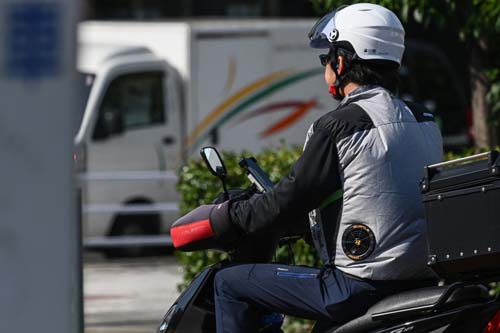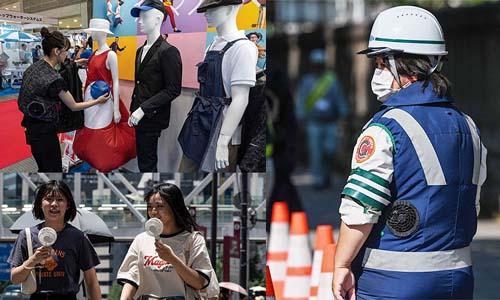
Japanese turn to wearable tech to beat the heat
Newswire
Tokyo: Selling jackets with built-in fans, neck coolers and T-shirts that feel cold, Japanese firms are tapping into a growing market for products to help people handle the summer heat. Japan — like other countries — is seeing ever-hotter summers. This July was the warmest in 100 years, with at least 53 people dying of heatstroke and almost 50,000 needing emergency medical attention.
Workman, which makes clothes for construction workers, launched a version of their fan-fitted jackets adapted for the high street in 2020 as demand grew. The mechanism is simple — two electric, palm-sized fans powered by a rechargeable battery are fitted into the back of the jacket.
They draw in air to then deliver a breeze — at variable speeds — onto the wearer’s body.
The jackets retail for 12,000 to 24,000 yen ($82-164).
“As the weather gets hotter, people who have never worn fan-equipped clothing before want to find ways to cool down… so more people are interested in buying it,” Workman spokesman Yuya Suzuki said.

“Just like you feel cool when you are at home with a fan, you feel cool just by wearing (the jacket) because the wind is blowing through your body all the time,” he said.Japanese summers are known to be hot and humid, but this July Tokyo really sweated. The average temperature was 28.7 Celsius, the highest on record since 1875.
Heatstroke is particularly deadly in Japan, which has the second-oldest population in the world after Monaco.
More than 80 per cent of heat-related deaths in the past five years have been among senior citizens.
“Some people die from heatstroke,” said No-zomi Takai of MI Creations, a company selling neck-cooling tubes mainly to factory and warehouse workers. “Individuals as well as companies are putting more and more effort into measures against it every year,” Takai said.
The gel inside his firm’s brightly coloured tubes — priced at 2,500 yen — is cool enough to use after 20 minutes in the fridge. Wearing it on the neck will “considerably cool the whole body” for about an hour, she said. Takai’s company joined an expo this year on “measures against extreme heat” in Tokyo to showcase new products that help users stay cool in the scorching heat.
At another booth, Tokyo-based company Lib-erta had a series of clothing including T-shirts and arm sleeves using prints that make users feel cool — especially when they sweat. The prints use materials such as xylitol that feel cool when reacting with water and sweat, they said. Chikuma, an Osaka-based company, has even created office jackets and dresses equipped with electric fans.
“We developed them with the idea that it could be proposed in places where casual wear is not allowed,” Yosuke Yamanaka of Chikuma said. Regular fan-fitted clothes can make the wearer look puffy, as they need to be zipped up,
and cuffs are tight.
But jackets developed jointly by Chikuma, power tool maker Makita and textile giant Teijin do not need to be buttoned up, thanks to a special structure that sandwiches the fans in two layers and keeps the cool air in, Yamanaka said.
